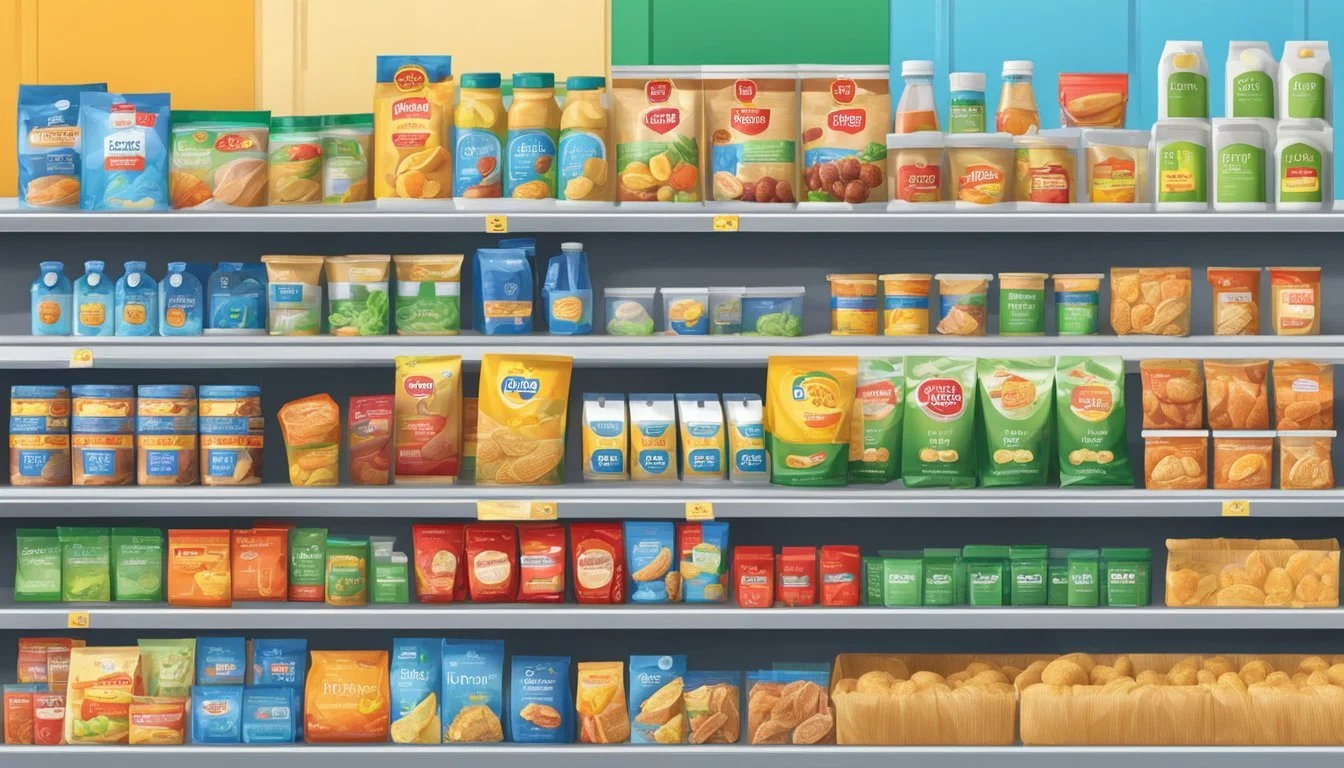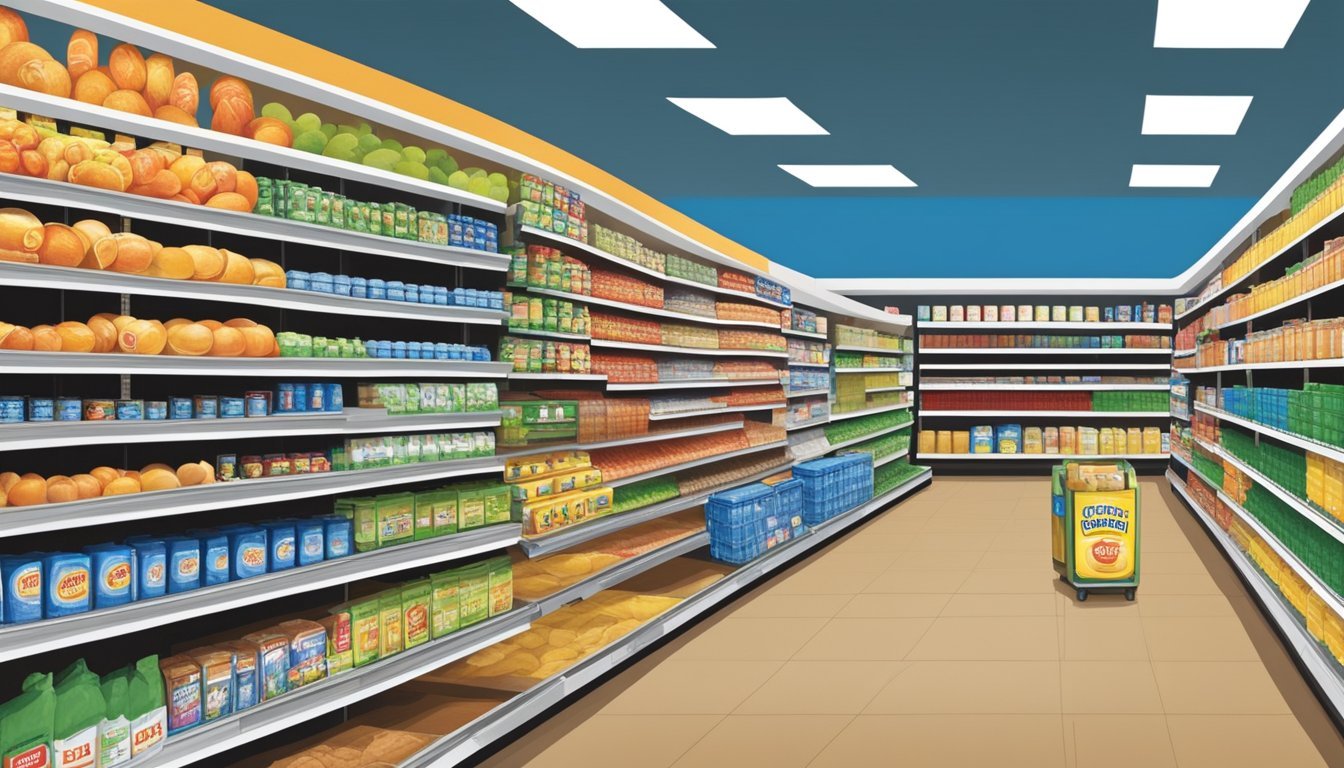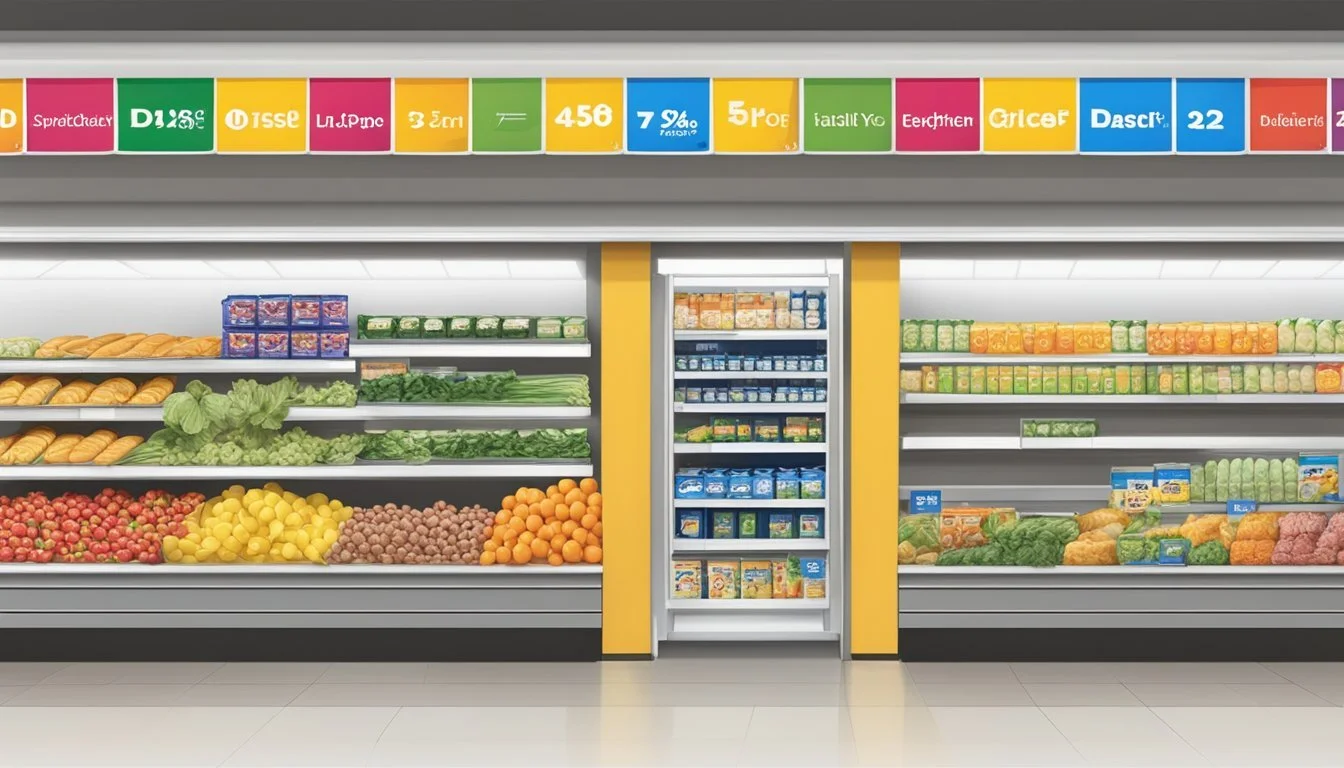Is Winn-Dixie Cheaper Than Lidl?
Comparing Grocery Prices and Value
Part of Our Grocery Store Guide with Details on Winn-Dixie Prices and Lidl Prices
In the competitive landscape of grocery stores, customers are continuously seeking the best value for their money, especially when it comes to everyday essentials. Supermarket chains like Winn-Dixie and Lidl have been at the forefront of this competition, each striving to offer the most economical options to their shoppers. Winn-Dixie, with its SE Grocers line, claims to provide products that are approximately 20% less expensive than comparable national brands, emphasizing affordability alongside quality.
Lidl, a relatively newer entrant in the US market, originating from Germany, has rapidly gained attention for its low pricing strategy and cost-efficient store model. The grocery chain has established itself as a strong contender, directly challenging the pricing of longstanding American stores. The presence of affordable store brands, along with special discounts, positions Lidl as a formidable opponent to both national and regional supermarket chains.
As consumers navigate between these options, the deliberation often circles back to one pivotal question: Is Winn-Dixie cheaper than Lidl? This comparison isn't just about sticker prices; it encapsulates the complexity of store brands versus national brands, the variety of products offered, and the overall shopping experience. Both Winn-Dixie and Lidl have their unique strategies to draw customers, but assessing which one provides the best value requires a deeper look at their pricing structures and the savings they pass on to the consumers.
Overview of Grocery Store Landscape
The grocery store landscape in the United States is characterized by a diverse array of players that range from national chains to regional stores. National chains like Walmart and Target have expanded their grocery offerings, often competing on price and convenience across vast networks of locations. Walmart, known for its competitive pricing, provides a significant benchmark for affordable grocery shopping.
In contrast, Aldi and Lidl represent the discount stores segment, with business models focusing on efficiency, no-frills shopping experiences, and own-brand products. Aldi’s smaller store size is tailored for a streamlined selection, prioritizing cost-saving over choice.
Kroger, a traditional supermarket, balances between competitive pricing and a wider product range. It is recognized for a mixture of brands, including its own private labels.
The grocery industry is also influenced by online retailers like Amazon, which owns Whole Foods. While Whole Foods caters to an upscale market with a focus on organic and specialty items, Amazon has ventured into more accessible online grocery services.
In the Southeastern U.S., particularly in Florida, regional stores like Publix and Southeastern Grocers—the parent company of Winn-Dixie—are strong contenders. Publix is known for its customer service, while Winn-Dixie has been historically preferred in its regional markets.
Each entity in the grocery industry—from supermarkets to grocery chains—strives to offer value through various strategies, be it pricing, product assortment, or shopping experience. This competitive environment shapes the choices available to consumers and the pricing strategies of companies like Winn-Dixie and Lidl.
Pricing Strategies in Retail Grocery
In the competitive retail grocery sector, pricing strategies are crucial for attracting and retaining customers. Retailers such as Winn-Dixie and Lidl focus heavily on providing value to shoppers through various cost-saving measures. Pricing often reflects a delicate balance between maintaining affordable sale prices and covering labor costs.
Winn-Dixie: Known for competitively priced items, especially under their SE Grocers brand, which may offer savings of approximately 20% in comparison to national brands.
Lidl: This retailer is renowned for its low prices. The company achieves savings by focusing on a limited selection, primarily of private labels, which reduces overhead and allows for discounts to be passed to consumers.
Discounts and Sales: Both stores frequently run sales to attract customers. Such promotions can range from weekly deal flyers to seasonal discounts, emphasizing the sense of value and urgency to save money.
Loyalty Programs: Consumers can also benefit from loyalty programs that often involve digital coupons and exclusive offers, incentivizing repeat visits and fostering a sense of customer loyalty.
Digital Integration: Investment in digital strategies enables grocers to offer personalized discounts. This customer-specific approach often leads to increased savings for consumers and better sales figures for the retailers.
In conclusion, the challenge for retailers is to devise and implement pricing strategies that not only entice shoppers with low costs but also ensure a sustainable profit margin. Through careful planning and a customer-oriented approach, these grocery chains strive to provide the best possible value and shopping experience.
Cost Comparison Between Stores
When comparing the prices between Winn-Dixie and Lidl, customers often weigh various factors such as the cost of produce, meat, dairy, organic products, and private-label brands.
Winn-Dixie is known for its SE Grocers line, which offers considerable savings, reportedly 20% cheaper than some national brands. This saving is especially prominent in their private-label brands, where customers can cut costs without compromising on quality. Additionally, their focus on providing quality products includes an array of fresh produce and meats.
Lidl, on the other hand, is a European grocery chain that emphasizes efficiency and cost-effectiveness. Their business model enables them to offer low prices on a variety of items, including organic produce. They have gained a reputation for providing value-priced options without sacrificing the quality of goods.
Here's a comparative table that outlines the typical price differences for various categories:
Item Category Winn-Dixie Lidl Produce Affordable More competitive prices Meat Standard market prices Discounted rates available Dairy Regular deals on store brand Typically lower prices Organic Store brand savings Aggressive discounts on organic produce
It is clear that Lidl often has the edge in terms of pricing, particularly for customers interested in organic produce and seeking the most economic options. However, for shoppers loyal to Winn-Dixie, the private-label brands remain a strong point for savings. Each store provides opportunities for cost-saving, and the choice might depend on the shopper's preference for specific items or brands.
Store Brands vs National Brands
Grocery retailers such as Winn-Dixie and Lidl compete not only through their store experiences but also with their product offering. Store brands, also known as private-label products, play a key role in this competition. Winn-Dixie's private label, SE Grocers, and Lidl's assortments are strategically priced to offer value to the consumer.
SE Grocers products are typically noticed to be around 20% cheaper than their national brand counterparts. They are aimed at providing consumers with a balance of quality and value. Similarly, national brands are recognized for their consistent quality and are often the benchmark for private labels to emulate.
Aldi, another grocery chain, offers its Simply Nature line, which features organic and non-GMO products. These store brands enable Aldi to provide health-conscious products at a lower cost than national brands.
Cost Savings: The primary advantage of store brands is the cost savings they provide. By cutting out the middleman and the marketing costs associated with national brands, retailers can pass on the savings to customers.
Quality Assessment: Traditionally, national brands have been perceived to have higher quality. However, store brands like Kirkland Signature from Costco have challenged this perception by offering products that meet or exceed the quality of national brands.
Consumer Perception: Shoppers' perception of store brands has evolved, with many seeing private-label items as a savvy choice that does not compromise on quality.
Overall, store brands are positioned as cost-effective alternatives to national brands. They offer a way for retailers to differentiate themselves and cater to price-sensitive consumers while maintaining quality standards.
Consumer Shopping Behavior
When shopping at supermarkets like Winn-Dixie and Lidl, customers exhibit particular behaviors influenced by their desire to save money and find the best deals. Surveys conducted among various consumer demographics show that families, especially, look to stretch their budgets by taking advantage of discounts offered by stores.
Individuals often enter the store with a shopping list, with the intent to purchase items that provide value for money. Discounters like Lidl appeal to this tendency by pricing their products competitively. Shoppers are drawn to stores that offer lower prices on everyday essentials, which both Winn-Dixie and Lidl aim to provide through their own-brand products.
Loyalty Programs:
Winn-Dixie: Offers a program that allows customers to save on store brands and earn points.
Lidl: Provides rotating deals that incentivize repeat visits without a traditional loyalty program.
Family Budgets and Savings:
Families prioritize lower-cost options without compromising on quality.
Tips for saving shared by consumers include buying store brands and using loyalty points.
Customers and Shopping Lists:
Shoppers often stick to a shopping list to avoid unnecessary expenditure.
Discounters are favored for fulfilling these lists affordably.
As a result, both supermarkets strive to position themselves as the go-to option for economical shopping, encouraging customers to return through various strategies, such as weekly deals and tailored discounts that resonate with consumers' habits and preferences.
Location and Accessibility
Winn-Dixie and Lidl are two prominent players in the U.S. grocery market, each with distinct approaches to location and accessibility. Winn-Dixie, a subsidiary of Southeastern Grocers, has established its strongholds primarily in the southeastern U.S., with a notable concentration in states like Florida. This regional focus means that customers in states like Georgia, Alabama, Louisiana, and Mississippi are likely to have a Winn-Dixie store within their reach.
Lidl, on the other hand, an international discount supermarket chain, has a growing presence on the East Coast of the United States. The company's expansion plans include opening stores in regions where accessible and affordable grocery shopping options are needed. Lidl locations are tailored for ease with a compact store layout designed to facilitate a quick shopping experience.
Both retailers understand the importance of real estate in ensuring store accessibility. Store layout also contributes greatly to the shopper's convenience:
Features Winn-Dixie Lidl Store Layout Traditional, larger footprint. Compact, easy-to-navigate layout. Real Estate Regional focus in the southeastern U.S. Strategic, expanding presence on East Coast.
Each company's location strategy interacts differently with competitors such as Aldi and Publix. Aldi pursues a similar expansion model to Lidl but often includes a more centrally located real estate strategy that spans wider geographically. Publix, also a significant presence in the Southeast, competes directly with Winn-Dixie, relying on an extensive network of locations and a reputation for quality.
In summary, while both Winn-Dixie and Lidl aim to be accessible, their strategies differ. Winn-Dixie maintains a strong, regionally-focused presence, while Lidl's stores are expanding in carefully chosen East Coast locations with an emphasis on convenience and navigability.
Digital and In-Store Promotions
Winn-Dixie and Lidl employ various strategies to offer savings to customers through digital and in-store promotions. Understanding these can help shoppers maximize their discounts and make informed purchasing decisions.
Winn-Dixie utilizes a combination of digital coupons and a loyalty program. Shoppers can find digital coupons on the store's official website or mobile application. Customers can sign up for the loyalty program to access additional savings. Some promotions are exclusive to loyalty program members, providing an incentive to join and save.
Lidl, on the other hand, does not have a traditional loyalty program but excels in offering in-store sales and discounts that are available to all shoppers. Lidl’s weekly sales, often advertised in their leaflets, attract customers looking for deals without any digital or membership hurdles. Additionally, Lidl presents a simplified experience through its mobile app, where digital coupons are available, adding more value to the shopping experience.
Comparatively, other retailers like Aldi and Walmart also provide savings opportunities through their own unique promotions, keeping the market competitive. Customers benefit from a variety of choices and can select the promotions that best fit their shopping habits and preferences.
Here's a snapshot of the promotions offered by the two stores:
Store Digital Coupons In-Store Sales Loyalty Program Winn-Dixie Available Limited Yes Lidl Available Frequent No
Shoppers should always check the latest deals as they may be time-sensitive and subject to change. By staying informed about the digital and in-store promotions of both Winn-Dixie and Lidl, customers can optimize their savings when purchasing groceries.
Product Variety and Availability
When comparing the variety and availability of products at Winn-Dixie and Lidl, customers will notice differences in selection across various departments. Winn-Dixie generally maintains a comprehensive stock of produce, meat, dairy, and canned goods, and is particularly noted for its SE Grocers store brand which offers an array of staple items. They also carry a selection of organic produce and pantry goods.
Lidl, on the other hand, has gained recognition for offering a wide range of specialty items, including gluten-free and organic options. Their store layout emphasizes fresh produce, meat, and dairy, with consistent availability of both basic and specialty products. In addition to this, Lidl's rotating stock often includes unique European and international foods that cater to diverse tastes.
For shoppers looking for a variety of options, both stores have adequate selections:
Winn-Dixie:
Strong selection of store brand essentials
Good availability of everyday frozen and pantry items
Organic options in various categories
Lidl:
Specialty items like imported cheeses and chocolates
Rapidly changing inventory with new, unique finds
More extensive selection of gluten-free products
Both grocery chains also make efforts to stock organic and healthier food options, although the range may vary from store to store. Customers interested in these products should check their local stores for specific availability.
Store Environment and Shopping Experience
When comparing the store environments of Winn-Dixie, Lidl, and Aldi, customers will notice distinct differences tailored to the brand’s approach. Winn-Dixie offers a more traditional supermarket ambiance with wider aisles and a variety of departments such as deli counters and bakeries. This setup is designed to cater to customers who appreciate a comprehensive shopping experience, allowing them to find a wide range of products from both national and store brands.
On the other hand, Lidl focuses on efficiency and cost-saving, which is reflected in its store layout. A significant percentage of Lidl’s inventory consists of its private label products, fostering a unique shopping environment. Lidl stores might have a more streamlined layout which can contribute to time savings for shoppers who have a precise shopping list and want to navigate the store quickly.
Aldi, similar to Lidl, emphasizes a no-frills shopping experience with an emphasis on their private brands. They operate with a self-service model where shoppers are encouraged to bring their shopping bags and pack their groceries, which helps Aldi to keep prices low. The store layout is straightforward, allowing for a quick shopping trip if customers arrive with a well-planned list.
Customers using shopping carts at these grocers should find that Winn-Dixie typically provides more space for maneuvering, which can be seen as a quality-focused amenity. Both Aldi and Lidl have compact cart areas, aligning with their efficient layout and quick turnover philosophy.
In summary, each store presents a different environment and shopping experience:
Winn-Dixie: Spacious, wide range of brands, traditional departments.
Lidl: Streamlined, private label focus, efficiency-oriented.
Aldi: Straightforward layout, self-service, budget-conscious.
Market Strategies of Different Chains
The grocery market encompasses a variety of supermarket chains each with distinctive strategies to draw consumers. Walmart and Kroger are known for vast networks and competitive pricing. Walmart employs a strategy of everyday low pricing and a diverse range of products beyond groceries. Kroger, on the other hand, focuses on a robust store brand lineup and fuel rewards programs.
Aldi and Lidl, both of German origin, have penetrated markets like Florida with no-frills, high-efficiency stores that prioritize store brands and limited selection at low costs. Trader Joe's operates on a similar model of unique, private label products that cultivate a loyal customer base.
In contrast, Whole Foods Market, acquired by Amazon, positions itself with a focus on organic and high-quality products, integrating technology and a premium shopping experience. Amazon's influence brings in a strong online presence and delivery services, enhancing customer reach.
Publix, a staple in the southeastern U.S. and known for strong customer service and a wide range of products, including ready-to-eat meals, differentiates itself as a community-oriented store.
Chain Strategy Focus Sam's Club Bulk buying, Membership model Dollar General Accessibility, Store density Safeway Customer loyalty programs Harris Teeter Upscale shopping, Customer service
Southeastern Grocers, which operates Winn-Dixie, aligns more with traditional grocery models, providing weekly specials and a local focus in its product selection. In the spectrum of supermarket chains, from discounters like Food Lion to premium grocers like Wegmans, each entity adapts its strategy to its target market, often reflecting community preferences and socioeconomic factors.
Impact of Discounters on Grocery Retail
Discounters like Aldi, Lidl, and Dollar General have significantly reshaped the landscape of grocery retail in the United States. These chains offer low-priced groceries and have managed to carve out a substantial market share due to their competitive pricing strategies. Moreover, the operational efficiencies of discount grocers enable them to maintain reduced overhead costs, thereby passing savings onto the consumers.
In states such as Florida, the presence of Aldi has expanded, applying pressure on established grocery chains such as Walmart and Target. This competition intensifies as Aldi acquires regional players like Winn-Dixie, further solidifying its market position. The aggressive expansion of Lidl also adds to the competitive dynamics, giving consumers a broader array of cost-effective grocery options.
Discount stores have adopted an ambitious approach to expansion, with Dollar General notably increasing its footprint across the country. These stores focus on value and convenience, emerging as formidable contenders in the grocery retail market.
Key Points:
Price: Discounters are attractive to price-sensitive customers, consistently offering lower prices.
Value: They focus on providing value, often through a more limited selection of goods that allow for bulk purchasing and lower costs.
Competition: The expansion of these stores directly challenges mainstream retailers and forces a competitive response, potentially driving down prices across the board.
Market Share: With Aldi's and Lidl's growth, the market share is gradually shifting, shaping consumer expectations and retail strategies.
The strategy of discounters disrupts traditional grocery retail models, compelling industry giants to adapt to the new baseline prices and value offerings set by these cost-focused stores.
The Role of E-commerce in Grocery Shopping
E-commerce has revolutionized the way consumers purchase groceries. Traditional supermarkets and grocery chains are now competing with digital giants like Amazon and Instacart. They've dramatically reshaped the landscape of grocery shopping, offering convenience, savings, and a variety of deals through digital coupons and promotions.
Convenience: Shoppers appreciate the comfort of purchasing from home or on-the-go, with the option to shop at any hour.
Savings: Online platforms frequently offer competitive pricing that can rival or beat in-store costs. Moreover, they often have exclusive online deals.
Digital Coupons: These can yield additional savings, and they are typically easy to use on e-commerce platforms.
Broad Selection: Online shopping provides access to a wide range of products that may not be available in local stores.
Grocery stores like Costco and Winn-Dixie have entered the digital arena, recognizing the importance of an online presence. Even companies headquartered in Bentonville, most notably Walmart, have aggressively expanded their e-commerce capabilities.
A significant impact of e-commerce has been on pricing. With greater transparency and the ability to compare costs among retailers, consumers can make more informed decisions. This can lead to increased savings as they have the ability to shop for the best deals available.
Moreover, the emergence of online grocery shopping has led to the rapid growth of grocery delivery and pickup services, creating a new level of competition among supermarkets. Retailers are continuously updating their online platforms to provide a more seamless shopping experience. As a result, customers can enjoy the benefits of online shopping with offerings like subscription services that provide additional savings and convenience.
Analyzing Customer Loyalty Programs
When comparing the customer loyalty programs of Winn-Dixie and Lidl, it’s pertinent to consider several aspects that influence shopper allegiance and savings potential. Winn-Dixie, with its SE Grocers rewards, provides customers a point-based system. Each dollar spent accumulates points that shoppers can redeem for discounts on groceries and fuel. This tangible rewards system encourages repeat purchases as customers work towards earning these savings.
Lidl, on the other hand, operates on a different model, which may include periodic sales and deals to entice customers. While it may not have a structured loyalty program akin to Winn-Dixie, Lidl focuses on offering lower prices upfront. This strategy can be perceived as a form of indirect savings compared to the accumulated points strategy of Winn-Dixie.
Loyalty Factor Winn-Dixie Lidl Program Type Structured loyalty program No structured loyalty program Savings Mechanism Points for discounts Low prices upfront Additional Benefits Fuel discounts -
Customer surveys play a significant role in refining these programs. They gather preferences and satisfaction levels, shaping the direction of future offerings. Additionally, the quality of the rewards can greatly influence customer loyalty—whether it's a percentage off their purchase or store-brand savings.
Loyalty programs must strike a balance between complexity and value. A straightforward program can be more attractive, removing the need to track points or understand tiers, which may resonate better with Lidl’s customer base.
In summary, both stores leverage different mechanisms aimed at promoting customer retention. Winn-Dixie’s approach rewards consistent spending over time, potentially leading to substantial discounts for loyal customers. Lidl, conversely, may attract customers through straightforward low pricing, forgoing the traditional loyalty program structure.
Conclusion
When it comes to grocery shopping, customers seek a balance between quality and value. Winn-Dixie and Lidl both offer competitive pricing for their products, but Winn-Dixie often provides additional cost savings, particularly through its SE Grocers line. Shoppers can expect to save, on average, about 20% on items under this brand compared to national brands.
Lidl stands as a reputable supermarket known for its wide selection of goods, including their private label products. The store is recognized for delivering quality at a lower price point, but each store's deals and selections can vary, influencing the overall shopping experience.
In essence, individual savings and the definition of 'value' can differ based on a customer's preferences and needs. When determining whether Winn-Dixie is cheaper than Lidl, one must consider the following factors:
Product Assortment: Variety of choices can affect the perception of value.
Own Brand Quality: Both stores offer in-house brands that aim to match or exceed the quality of national brands.
Discounts and Deals: Promotional offers may reduce costs significantly.
Store Services: The presence of bakeries, delis, and pharmacies may contribute to a superior shopping experience at certain stores.
Customers are encouraged to compare both supermarkets considering the above entities. They may find that while Winn-Dixie could offer more noticeable discounts on its store brand, Lidl's overall pricing strategy might still render lower receipts for a comparable haul. Shoppers should weigh their options and choose the store that aligns most closely with their grocery needs and financial expectations.













